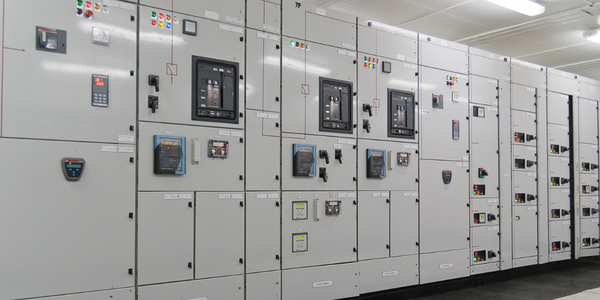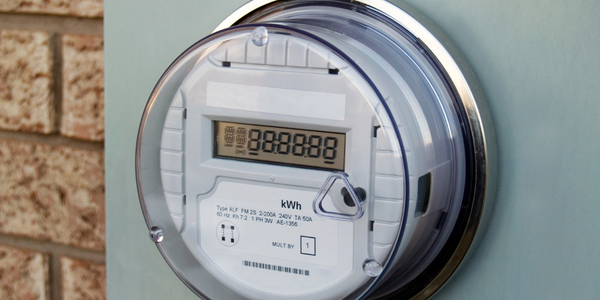
Technology Category
- Infrastructure as a Service (IaaS) - Cloud Middleware & Microservices
- Sensors - Utility Meters
Applicable Industries
- Electrical Grids
- Renewable Energy
Applicable Functions
- Logistics & Transportation
- Product Research & Development
Use Cases
- Cybersecurity
- Microgrid
Services
- System Integration
- Testing & Certification
The Customer
Central Hudson Gas & Electric Corporation
About The Customer
Central Hudson Gas & Electric Corporation is a utility company that services a 2,600 square-mile area between the northern New York City suburbs and the state capital of Albany. The company has a long-term vision that aligns with the state’s commitment to sustainability and is transitioning away from a traditional distribution model to accommodate the growing push for renewable energy. The company services nearly 400,000 electric and natural gas customers and has introduced a distributed generation program as part of New York State’s energy plan to foster an innovative, clean energy economy. The program has brought new possibilities and incentives to customers but also introduced a few challenges.
The Challenge
Central Hudson Gas & Electric Corporation, a utility company servicing a 2,600 square-mile area in New York, was facing the challenge of transitioning away from a traditional distribution model to accommodate the growing push for renewable energy. The company had a long-term vision that aligned with the state’s commitment to sustainability, but the transition was not as simple as flipping a switch. The utility company needed to ensure quality and reliability as demand evolved. The introduction of their distributed generation program, part of New York State’s energy plan, brought new possibilities and incentives to customers but also introduced a few challenges. The utility company needed to ensure they had the right level of visibility and control over their grid, especially with the introduction of Distributed Energy Resources (DERs), small-sized power generation units that attach to the grid and enable the utility to introduce renewable energy sources, such as solar power.
The Solution
Central Hudson found their solution in a wireless communication processing tool they had begun to implement with longtime partner Sensus, a Xylem brand. The utility company deployed the Sensus Remote Telemetry Module™ (RTM II) initially to monitor grid conditions and protect against outages. The Distribution Automation (DA) system uses Intelligent Electronic Devices placed strategically across their network to help them monitor and control distribution assets. The utility company expanded the DA solution to include monitoring and control of DERs. As solar farms grew in their rural northeast territory, Central Hudson recognized the potential for excessive grid backflow and overvoltage that could cause system damage. The utility company's engineering team came up with a design for a direct transfer trip, or (DTT) system that would communicate from the interoperable RTM II with circuit breakers and reclosers. The system can automatically isolate a DER when a condition exists that can lead to excessive reverse power flow or overvoltage is detected and help ensure grid stability.
Operational Impact
Quantitative Benefit

Case Study missing?
Start adding your own!
Register with your work email and create a new case study profile for your business.
Related Case Studies.

Case Study
Remote Monitoring & Predictive Maintenance App for a Solar Energy System
The maintenance & tracking of various modules was an overhead for the customer due to the huge labor costs involved. Being an advanced solar solutions provider, they wanted to ensure early detection of issues and provide the best-in-class customer experience. Hence they wanted to automate the whole process.

Case Study
Vestas: Turning Climate into Capital with Big Data
Making wind a reliable source of energy depends greatly on the placement of the wind turbines used to produce electricity. Turbulence is a significant factor as it strains turbine components, making them more likely to fail. Vestas wanted to pinpoint the optimal location for wind turbines to maximize power generation and reduce energy costs.

Case Study
Siemens Wind Power
Wind provides clean, renewable energy. The core concept is simple: wind turbines spin blades to generate power. However, today's systems are anything but simple. Modern wind turbines have blades that sweep a 120 meter circle, cost more than 1 million dollars and generate multiple megawatts of power. Each turbine may include up to 1,000 sensors and actuators – integrating strain gages, bearing monitors and power conditioning technology. The turbine can control blade speed and power generation by altering the blade pitch and power extraction. Controlling the turbine is a sophisticated job requiring many cooperating processors closing high-speed loops and implementing intelligent monitoring and optimization algorithms. But the real challenge is integrating these turbines so that they work together. A wind farm may include hundreds of turbines. They are often installed in difficult-to-access locations at sea. The farm must implement a fundamentally and truly distributed control system. Like all power systems, the goal of the farm is to match generation to load. A farm with hundreds of turbines must optimize that load by balancing the loading and generation across a wide geography. Wind, of course, is dynamic. Almost every picture of a wind farm shows a calm sea and a setting sun. But things get challenging when a storm goes through the wind farm. In a storm, the control system must decide how to take energy out of gusts to generate constant power. It must intelligently balance load across many turbines. And a critical consideration is the loading and potential damage to a half-billion-dollar installed asset. This is no environment for a slow or undependable control system. Reliability and performance are crucial.

Case Study
Remote Monitoring and Control for a Windmill Generator
As concerns over global warming continue to grow, green technologies are becoming increasingly popular. Wind turbine companies provide an excellent alternative to burning fossil fuels by harnessing kinetic energy from the wind and converting it into electricity. A typical wind farm may include over 80 wind turbines so efficient and reliable networks to manage and control these installations are imperative. Each wind turbine includes a generator and a variety of serial components such as a water cooler, high voltage transformer, ultrasonic wind sensors, yaw gear, blade bearing, pitch cylinder, and hub controller. All of these components are controlled by a PLC and communicate with the ground host. Due to the total integration of these devices into an Ethernet network, one of our customers in the wind turbine industry needed a serial-to-Ethernet solution that can operate reliably for years without interruption.

Case Study
Temperature monitoring for vaccine fridges
Dulas wanted a way to improve the reliability of the cold chain, facilitating maintenance and ensuring fewer vaccines are spoiled. Dulas wanted an M2M solution which would enable them to record and report the temperature inside vaccine refrigerators.

Case Study
Hydro One Leads the Way In Smart Meter Development
In 2010, Ontario’s energy board mandated that time-of-use (TOU) pricing for consumers be available for all consumers on a regulated price plan. To meet this requirement, Hydro One needed to quickly deploy a smart meter and intelligent communications network solution to meet the provincial government’s requirement at a low cost. The network needed to cover Hydro One’s expansive service territory, which has a land mass twice the size of Texas, and its customers live in a mix of urban, rural, and remote areas, some places only accessible by air, rail, boat or snowmobile. Most importantly, the network needed to enable future enterprise-wide business efficiencies, modernization of distribution infrastructure and enhanced customer service. To meet these needs, Hydro One conceptualized an end-to-end solution leveraging open standards and Internet Protocols (IP) at all communication levels. The utility drew upon industry leaders like Trilliant to realize this vision.



